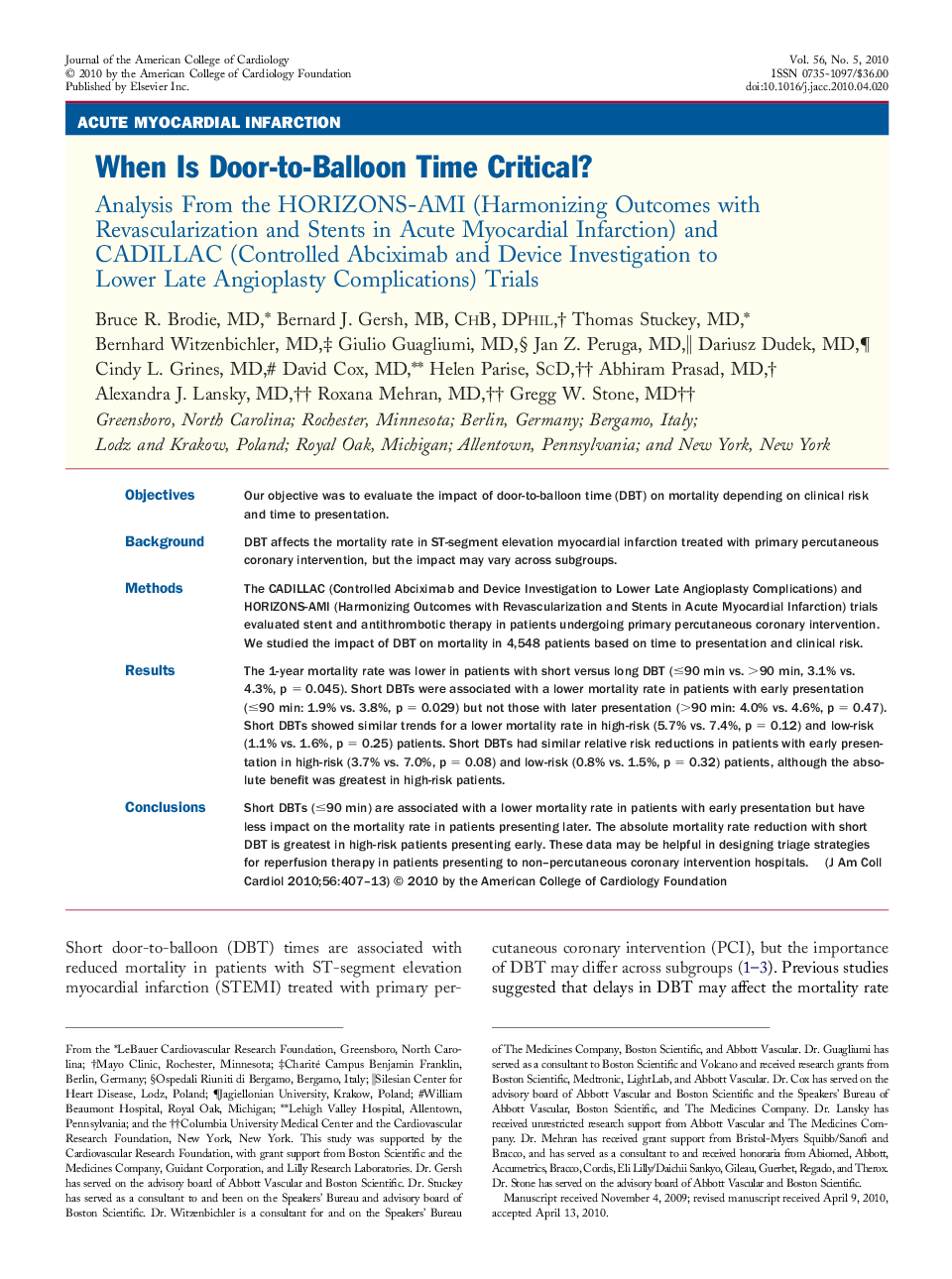| Article ID | Journal | Published Year | Pages | File Type |
|---|---|---|---|---|
| 2948536 | Journal of the American College of Cardiology | 2010 | 7 Pages |
ObjectivesOur objective was to evaluate the impact of door-to-balloon time (DBT) on mortality depending on clinical risk and time to presentation.BackgroundDBT affects the mortality rate in ST-segment elevation myocardial infarction treated with primary percutaneous coronary intervention, but the impact may vary across subgroups.MethodsThe CADILLAC (Controlled Abciximab and Device Investigation to Lower Late Angioplasty Complications) and HORIZONS-AMI (Harmonizing Outcomes with Revascularization and Stents in Acute Myocardial Infarction) trials evaluated stent and antithrombotic therapy in patients undergoing primary percutaneous coronary intervention. We studied the impact of DBT on mortality in 4,548 patients based on time to presentation and clinical risk.ResultsThe 1-year mortality rate was lower in patients with short versus long DBT (≤90 min vs. >90 min, 3.1% vs. 4.3%, p = 0.045). Short DBTs were associated with a lower mortality rate in patients with early presentation (≤90 min: 1.9% vs. 3.8%, p = 0.029) but not those with later presentation (>90 min: 4.0% vs. 4.6%, p = 0.47). Short DBTs showed similar trends for a lower mortality rate in high-risk (5.7% vs. 7.4%, p = 0.12) and low-risk (1.1% vs. 1.6%, p = 0.25) patients. Short DBTs had similar relative risk reductions in patients with early presentation in high-risk (3.7% vs. 7.0%, p = 0.08) and low-risk (0.8% vs. 1.5%, p = 0.32) patients, although the absolute benefit was greatest in high-risk patients.ConclusionsShort DBTs (≤90 min) are associated with a lower mortality rate in patients with early presentation but have less impact on the mortality rate in patients presenting later. The absolute mortality rate reduction with short DBT is greatest in high-risk patients presenting early. These data may be helpful in designing triage strategies for reperfusion therapy in patients presenting to non–percutaneous coronary intervention hospitals.
